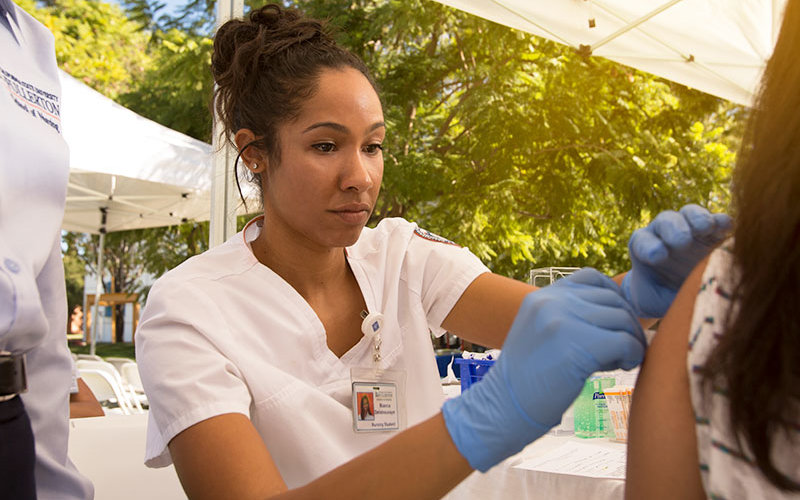
A measles epidemic starts quietly.
A cough, a sneeze. The highly contagious measles virus, which can live for hours in airspace, begins to spread to potential new hosts who, without knowing it, become carriers.
It’s not a problem if a youngster is healthy and has been immunized. The virus that is spreading through the classroom or playground is nothing to fear. But what about the child with cancer, a weakened immune system or other diseases that doesn’t allow them to immunized? What happens to the baby in its mother’s arms who is still too young to be vaccinated? Or the pregnant woman who comes into contact with the virus?
Yes, a measles epidemic starts quietly — but its reach can be far-ranging, and potentially deadly.
In communities like Clark County, Washington, the measles virus is spreading quickly out of control.
“The incubation period for measles is four days. However, it is 10-14 days before physical signs show,” says Penny Weismuller, Cal State Fullerton professor of nursing, who speaks from more than 20 years of experience serving in the public health sector, including service as disease control and epidemiology manager for the County of Orange Health Care Agency.
When the measles vaccine first came out in the 1960s, “there was no big outcry against vaccination because people had seen the illness, what it looked like and the complications,” Weismuller explains.
Complications can range from diarrhea to ear infections — from temporary to permanent hearing loss — as well as pneumonia, encephalitis and death.
“Vaccinations were so highly effective that by the Year 2000, measles disappeared from the United States,” she notes.
But it wasn’t over. With no measles cases, vaccination rates started to fall, Weismuller explains. Also, for more than 20 years, health professionals have been battling misconceptions about vaccine safety, especially the debunked 1997 study by Andrew Wakeman that suggested that the measles vaccine was increasing autism in British children.
“That report was flawed,” Weismuller says. “Unfortunately, the notion that vaccinations are harmful continues despite medical science. As vaccination rates fell, measles returned to the U.S., carried by people who traveled internationally and then spread rapidly among unimmunized children.
“The cost of the outbreak in Washington is more than $1 million,” says the nursing educator. “The costs, both personal and societal, are huge.
“It is very concerning because measles can be very serious, especially for those who can’t be protected in communities where the vaccination rate is below about 90 percent.”
Weismuller notes that when the percentage of vaccinations in a community reaches at least 93-95 percent, there is a level of ‘herd immunity’ for the entire population. “When enough people are vaccinated against a certain disease, the germs can’t travel as easily from person to person,” she explains.
Clark County health officials estimate that the average overall immunization rate in kindergarten through 12th grade in Clark County is about 78 percent.
With new avenues to measles and other viruses coming into our communities, “there is a societal responsibility to be immunized to protect all of us,” Weissmuller stresses.